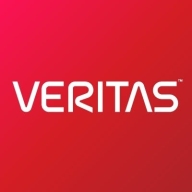

Veritas Alta SaaS Protection and Microsoft Defender for Identity both specialize in cloud environment data security, with Defender having an advantage in security integration aligned with Microsoft's ecosystem.
Features: Veritas Alta SaaS Protection provides comprehensive data management with strong data recovery, ease of use, and robust integration with cloud platforms. Microsoft Defender for Identity offers advanced threat detection, seamless integration with Microsoft's other security tools, and efficient real-time monitoring capabilities.
Room for Improvement: Veritas Alta SaaS Protection could enhance its compatibility with non-EMC solutions, address user interface complexity, and simplify backup processes for hybrid cloud configurations. Microsoft Defender for Identity requires improvements in user-friendliness, reduced dependency on Microsoft's ecosystem, and streamlined alert management to handle false positives efficiently.
Ease of Deployment and Customer Service: Veritas Alta SaaS Protection offers an easy deployment process with proactive customer support, ensuring users can quickly adapt the solution to their needs. Microsoft Defender for Identity benefits from its tight integration with Microsoft products, which could simplify deployment for existing Microsoft users, albeit potentially introducing complexities for non-Microsoft environments.
Pricing and ROI: Veritas Alta SaaS Protection is competitively priced, offering substantial ROI through comprehensive data services. Microsoft Defender for Identity may incur higher initial costs but provides significant ROI potential due to its emphasis on security and threat prevention, potentially lowering costs associated with security breaches.


Microsoft Defender for Identity integrates with Microsoft tools to monitor user activity, providing advanced threat detection and analysis using AI. It enhances proactive threat response and security visibility, making it essential for securing on-premises and cloud environments like Active Directory.
Microsoft Defender for Identity offers comprehensive monitoring and AI-driven user behavior analysis. It detects threats through real-time alerts and identifies lateral movements and entity tagging, ensuring robust security management. With excellent visibility via its dashboard, it supports customized detection rules and seamlessly integrates with SIEM platforms. While SecureScore and SecureScan provide robust environment security, there is room for improvement in cloud security, on-premises application integration, and remediation capabilities. Azure integration is limited, and the administrative interface could be more user-friendly. Users experience frequent false positives, affecting threat detection efficiency.
What key features stand out in Microsoft Defender for Identity?In specific industries such as education and finance, Microsoft Defender for Identity is crucial for securing on-premises Active Directory and Azure Active Directory environments. It effectively detects suspicious activities and manages conditional access policies, offering user and entity behavior analytics, endpoint detection and response capabilities. This helps prevent unauthorized access and strengthens overall security, making it an invaluable asset for organizations aiming to safeguard their digital infrastructure.
Veritas Alta SaaS Protection is a comprehensive cloud-to-cloud backup and recovery solution designed to protect critical data and applications in Software-as-a-Service (SaaS) environments. With the increasing adoption of SaaS applications like Microsoft Office 365 and Salesforce, organizations need a reliable and efficient way to safeguard their data from accidental deletion, malicious attacks, and other data loss scenarios.
This product overview will highlight the key features and benefits of Veritas Alta SaaS Protection. Firstly, it offers automated and continuous backup of SaaS data, ensuring that organizations can easily recover lost or corrupted data with minimal downtime. The solution supports a wide range of SaaS applications, including email, calendars, contacts, files, and collaboration platforms.
Veritas Alta SaaS Protection provides granular recovery options, allowing users to restore individual items, folders, or entire applications as needed. This flexibility ensures that organizations can quickly recover specific data without the need for a full system restore. Additionally, the solution offers point-in-time recovery, enabling users to restore data from a specific date and time, further enhancing data protection and compliance requirements.
Another key feature of Veritas Alta SaaS Protection is its advanced security capabilities. The solution encrypts data both in transit and at rest, ensuring that sensitive information remains secure throughout the backup and recovery process. It also provides multi-factor authentication and role-based access controls, allowing organizations to enforce strict access policies and prevent unauthorized access to their SaaS data.
Furthermore, Veritas Alta SaaS Protection offers a user-friendly interface and intuitive management console, making it easy for organizations to configure and monitor their backup and recovery processes. The solution provides comprehensive reporting and auditing capabilities, allowing administrators to track backup status, monitor storage usage, and generate compliance reports.
We monitor all Advanced Threat Protection (ATP) reviews to prevent fraudulent reviews and keep review quality high. We do not post reviews by company employees or direct competitors. We validate each review for authenticity via cross-reference with LinkedIn, and personal follow-up with the reviewer when necessary.